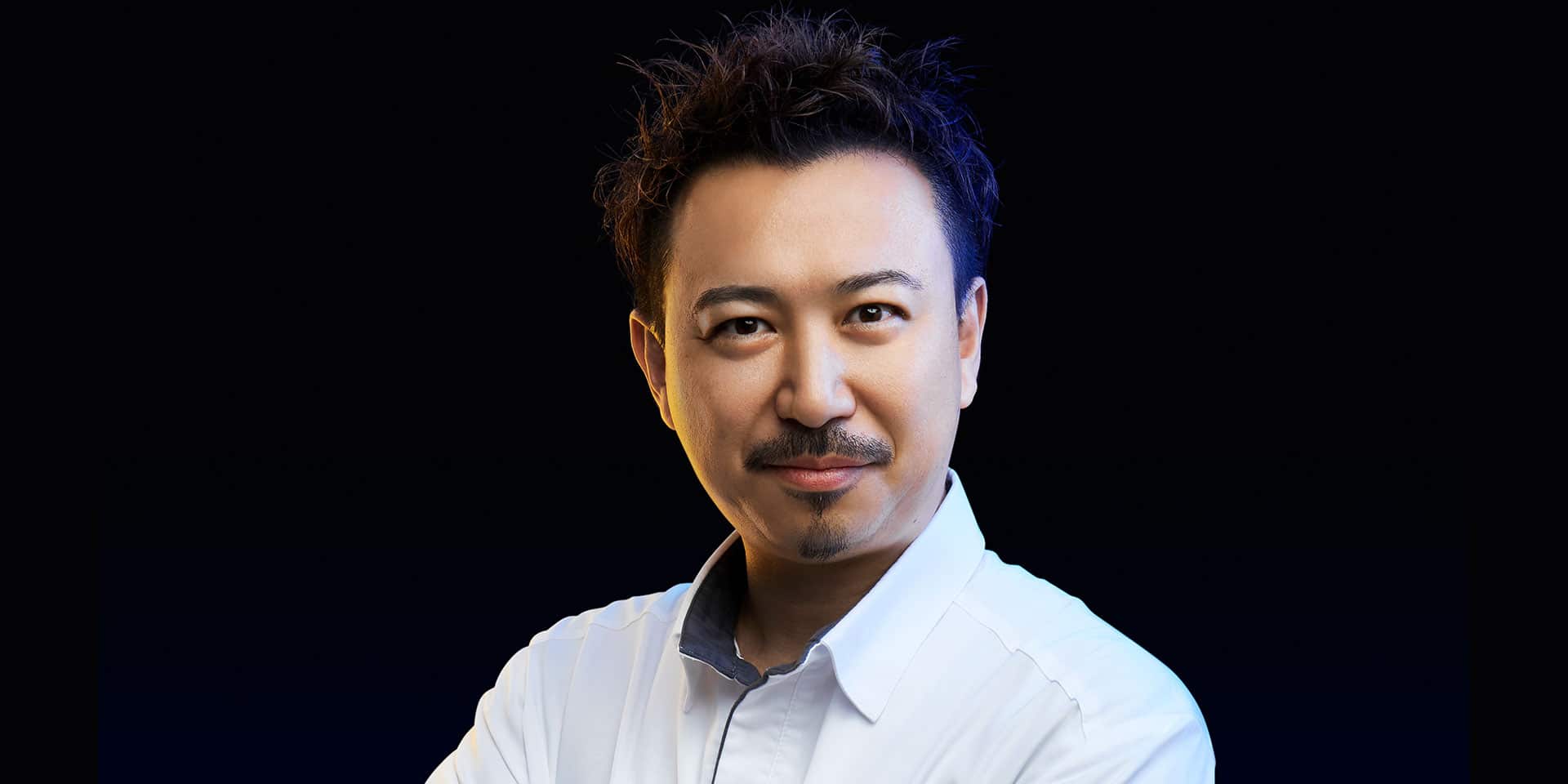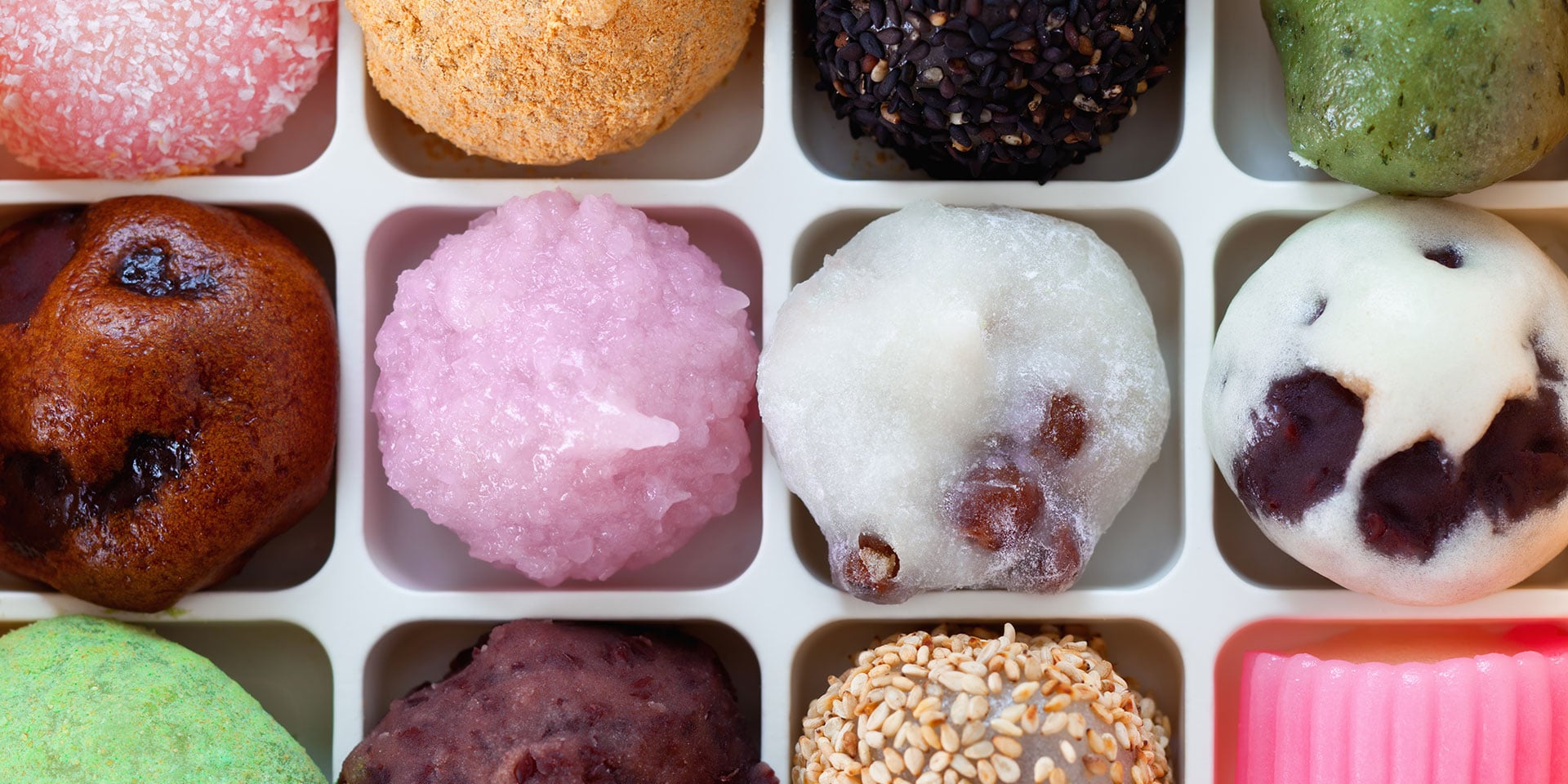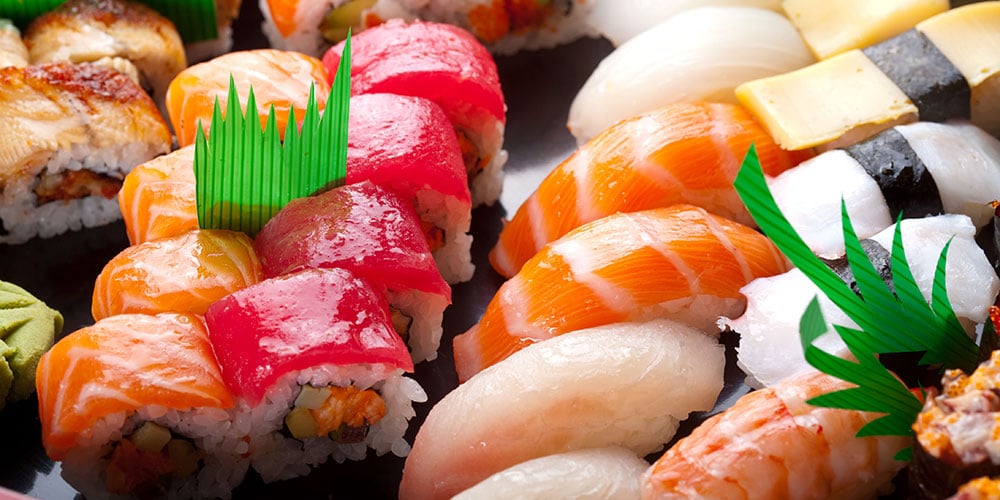
My first lunch at Yajima Sushi, in Tokyo, felt more like a kidnapping. There were open spots at the counter. But the chef, Susumu Yajima, instructed me to take a seat nearby and wait. Eventually I was summoned to a place directly in front of him, and the attack began: Piece after piece in rapid succession, as Yajima barked orders at me.
“Eat now!” he said, milliseconds after passing me a glistening slice of buri(amberjack) atop shari (the finger of rice that forms the base of nigiri sushi). “Use your hand!” he upbraided me, as I reached for my chopsticks. He even instructed me to half-chew one piece before washing it down with sake.
Was it the taste of the fish, or some culinary variant on Stockholm Syndrome, that compelled me to return, and to keep returning? Either way, I fell in love with the low-ceilinged room, hidden in the basement of a nondescript building off a main road in Shibuya. And I came to realize that Yajima’s bossiness was an integral part of the appeal.
Sushi is fast food. You shouldn’t even really sit down to eat it.
During another meal, as I followed his orders to the letter, I began to suspect there was something profound behind these edicts. Some were rudimentary and fairly common; others were unique to him; still others recalled sushi’s origins as Edo-era street food.
When I summoned up the courage to ask about this, his wife, Yoshiko, yelled from the kitchen: “He’s just strange!” Yajima nodded. “I’m just forcing my way onto my customers,” he agreed.
But slowly, over the course of several meals, he opened up and told me more: How he’d become a chef; how he and his wife had run their sushi-ya together for almost 34 years; and how the story of his life, and this place, was encapsulated in his Ten Commandments of Sushi.
1. A Full Meal Should Take Just Ten to Fifteen Minutes.
After downing a piece of supremely fresh aji (horse mackerel) with scallions and ginger paste at the mandated maximum speed, I asked Yajima-san to slow down — and explain why he wanted me to eat so fast.
“Sushi is fast food,” he said. “You shouldn’t even really sit down to eat it. Only in the 1950’s, before the Tokyo Olympics, did they start to have sit-down sushi joints. Before that it was served at yatai (street stalls). Now there are no yatai. Health regulations.”
“I understand the history,” I said. “But what’s the point of serving so fast?”
He placed a slice of ika (squid) on the black marble surface in front of me. “One, two, three,” he counted. “Every second that passes, it declines. That’s why I want you to eat it immediately.”
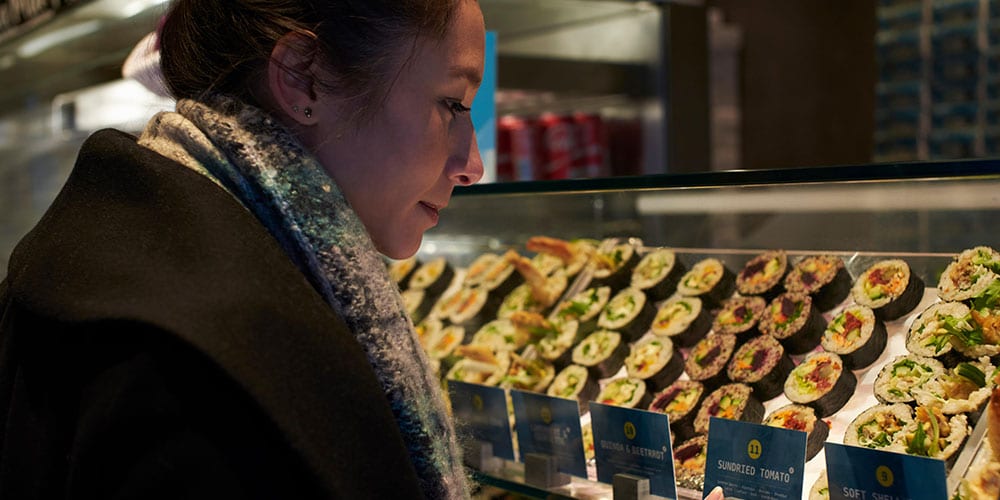
2. Eat Sushi for Lunch, Not For Dinner.
One morning I traveled to Tsukiji, Tokyo’s massive fish market, with Yajima-san. He rode a small motorcycle piled with styrofoam containers in which he carried the day’s supplies back to his restaurant, and he paid for everything in cash, as is the custom. He told me that the lunch he was about to serve was the proper, perhaps the only, time that sushi should be eaten.
“There’s a lot of rice in sushi,” he said. “It fills you up. That’s why you should eat it for lunch. Of course I have to serve dinner to survive; but when I make sushi for dinner, I put 50 percent less rice in each piece.”
3. Sushi Is Not Only About Taste, It Is Also About Smell.
While Yajima-san shops at Tsukiji, his wife cuts and cleans the shrimp, shucks the clams for soup, and cooks and seasons the rice. When he returns, the smells of her cooking are already strong, just the way he likes it. “It’s the whole experience,” he says, “not just the taste. There’s also touch and smell — the feeling you get from a place.”
I had been to many high-end, minimalist sushi joints in Tokyo, whose creations emerged as if from nowhere, looking like art on a plate. Yajima offered something different: a unique environment that was an extension of his own eccentric personality. He could even be caught at the end of lunch hour sneaking a smoke. It was fundamentally his sushi-ya, and I was happy to have him order me around in it.
4. Eat Sushi in a Small, Low-Ceilinged Space.
“In the larger sushi shops, the smell of the fish escapes because the ceilings are too high to contain them,” says Yajima-san. “Smaller places are where they serve the best food. Their size captures the flavor.”
At the end of one meal, I offered to buy Yajima-san a sake, and he did something I’d never seen before. He took my small glass, which had just a sip or two left, refilled it, then poured me a different, new one. We toasted and he drank from my old glass. Despite his authoritarian vibe, he was actually a very warm guy.
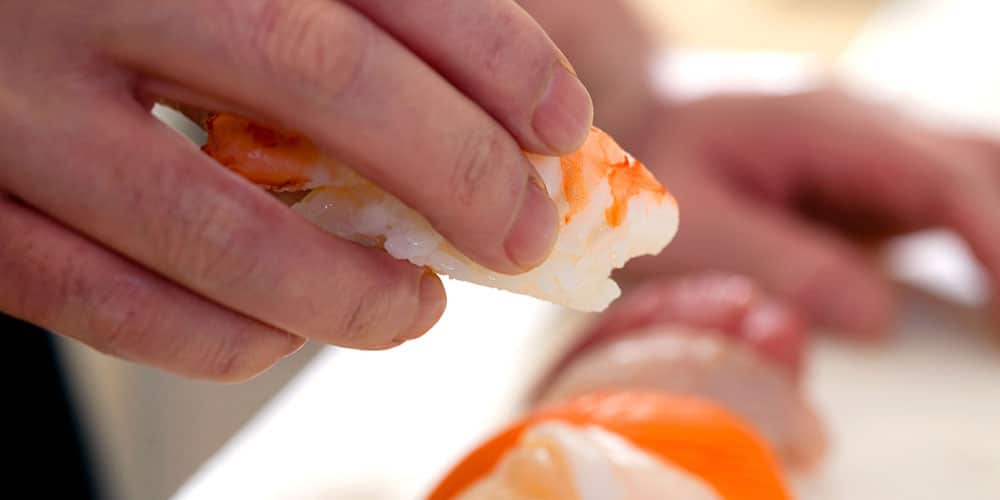
5. Use Your Hands Not Your Chopsticks to Eat My Sushi.
“Sushi is delicate,” Yajima-san tells me. “It’s easy for the rice to break or crumble when you use chopsticks. That harms the form. Also, when you use your hands, you feel the sushi. And you can get it into your mouth faster.”
Before he puts each piece down, he sweeps it along the black surface, as if using the rice to brush it. “That’s so it will stick,” he explains.
Some elite restaurants in Japan are ichigen-san okotowari (first-time customers not allowed), meaning a regular customer has to introduce you before you can make a reservation. Yajima, on the other hand, welcomes everyone, as long as you follow his instructions. Also, unlike many places in Tokyo, he and his wife make an effort to be open to foreigners (she started intensively studying English just 18 months ago, and already speaks it pretty well). This makes the rule-bound nature of the place much easier to accept.
6. Eat the Sushi Immediately After I Serve it to You, While the Rice is Still Warm.
Like many good sushi restaurants, Yajima keeps his rice slightly warm and refuses to serve multiple pieces on a plate. He makes each one individually, places it in front of its recipient, and forces them to down it on the spot.
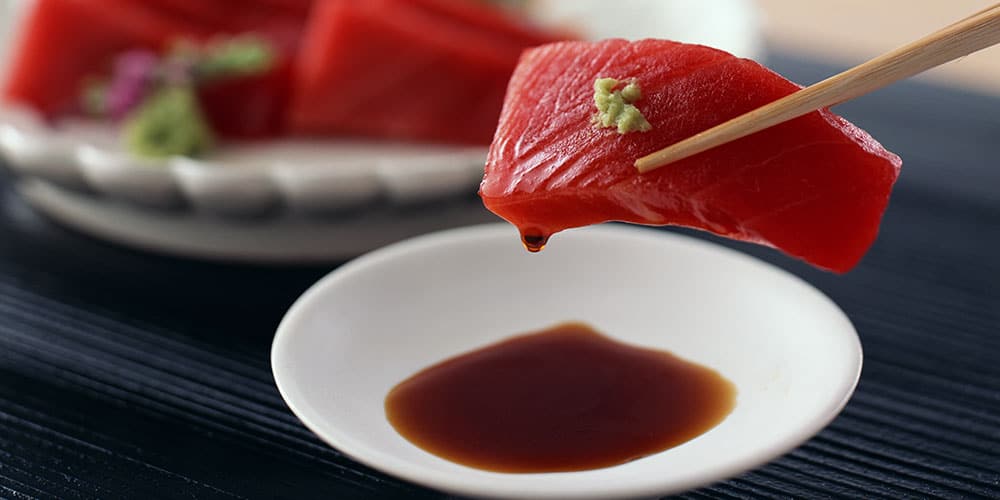
7. The Chef Puts on the Sauce and Wasabi, You Eat the Sushi. No Soy Sauce and Especially No Wasabi Should be Added.
As the last step before serving, Yajima paints the top of most pieces with a dark brown paste applied with a small brush. “This liquid is nikiri,” he explains, stirring its depths. “Mine is 70% soy sauce, 20% mirin, and 10% sake. You boil it to evaporate the alcohol. Just as it starts to simmer, you turn off the heat. That’s why we call it nikiri, which means to cut the boiling.”
“I never use pure soy sauce,” he says. “It’s too strong. My sauce is more subtle.”
8. Drink Sake with Sushi. Half Chew a Piece of Sushi, Swig Some Sake While the Sushi is Still in Your Mouth. Now Finish Chewing.
The first time I was about to eat a piece of raw clam sushi after drinking some sake, Yajima said something to his wife in Japanese, so she could translate. “Chew it a bit but don’t swallow,” she said. I obeyed.
“Now sake!” Yajima barked. The combination was perfect. The crispness of the drink cut through the briny intensity of the shellfish. “You need to chew on the fish a little, to release some of the flavor. Then sip the sake while the fish is still in your mouth. Each sake alone has one flavor, but when you mix that with different fish you discover many more.”
Yajima-san is 63 years old. His wife is 60. They are the only employees, working from eight in the morning to midnight, with a three hour break between lunch and dinner. They raised five children here, two girls and three boys; Yajima’s wife worked right up until she gave birth and, when her kids were infants, she carried them on her back as she cooked. The children would come every day after school and sit quietly on a tatami mat at the rear of the shop, doing their homework and being careful not to disturb the customers just a few feet away.
It’s not an easy life, but the low overhead offers Yajima-san the freedom to run the place according to his own principles. He answers to no-one — except his wife. “She gets on my nerves sometimes. That’s why I need my cigarettes. But she’s the boss!” he says. “It’s scary when we get into a fight.”
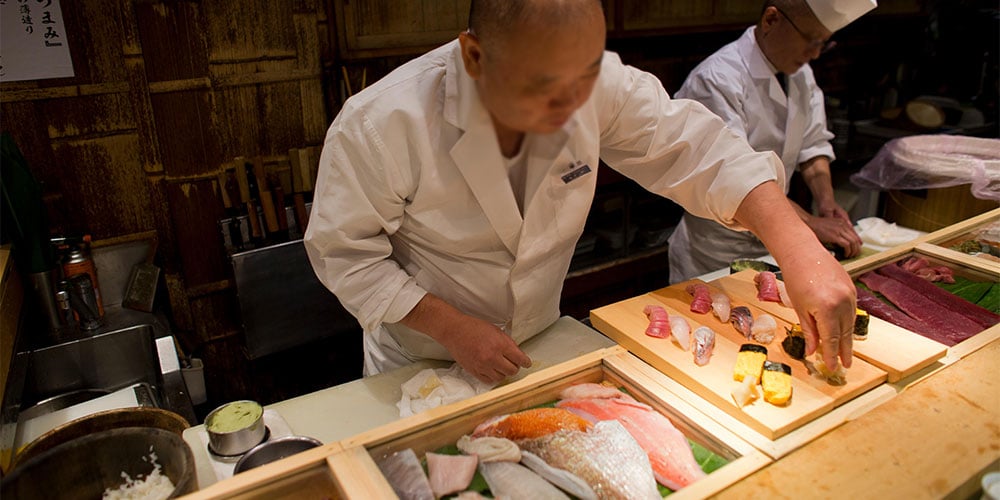
9. Savor My Sushi, But Don’t Chit-Chat.
There’s a ramen shop in Tokyo that has curtains around each seat. Their purpose is simple: Even if you come with friends, when the ramen is placed before you, you should focus solely on the noodles, and not be distracted by your companions. At Yajima, there are no physical curtains, but the idea is more or less the same: Focus on the sushi, nothing else.
“I started working in my father’s sushi place when I was 10 years old, and I knew then what I wanted to be when I grew up,” Yajima-san told me. “I always thought he was so cool. He used to say to me ‘Never become a salaryman. They’re so boring. Do sushi.’”
That’s not how his children see it. None of them want to take over the business — perhaps because, having literally grown up here in the shop, they know just how tough it is.
10. Follow These Commandments If You Want to Eat My Sushi. Otherwise I will Pretend We Are Full When You Call for a Reservation.
“For me,” says Yajima, “this isn’t a job. It’s a hobby I get to do all day, every day. It’s something I love. I’ll never retire from being a sushi man.”
This story first appeared on Medium.com as a part of Gone – smart, surprising and compulsively readable travel stories, launched in partnership with the Marriott portfolio of brands.






